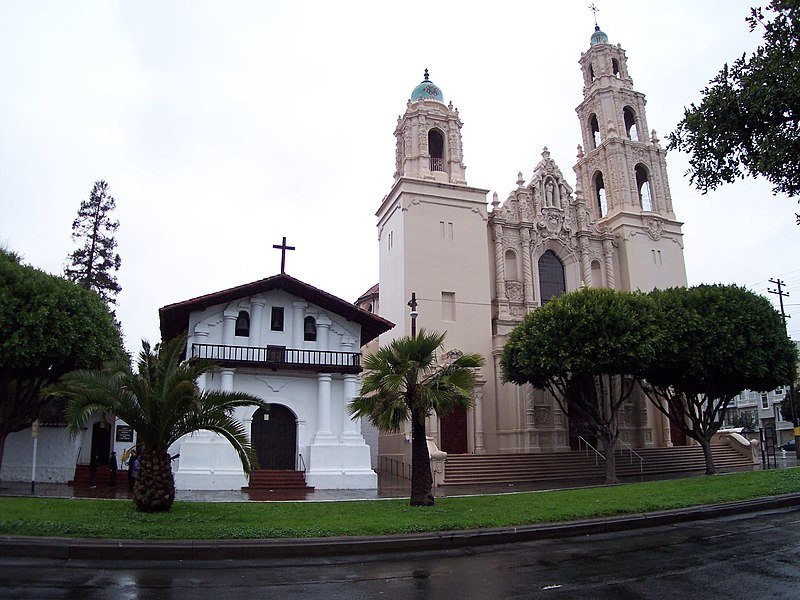Hispanic Architecture in the San Francisco Bay Area
Presidio Officers’ Club. Photo from Wedgwood Planning & Events
As we celebrate National Hispanic Heritage Month, we acknowledge how early Spanish and Mexican occupations defined San Francisco's built landscape. The Bay Area's Mediterranean climate and abundance of adobe material adapted well to Spanish colonial architecture. One of the oldest buildings in the city, the Presidio Officers' Club, was a part of El Presidio de San Francisco, a U-shaped fort with an internal plaza constructed in the late eighteenth century. The original adobe walls were incorporated into the façade of the building when the army rebuilt it in 1847. During subsequent restorations, new materials and styles melded with the older ones while referencing early Spanish colonial architecture. The Club features rustic Spanish-tile gable roofs, heavy rough timber lintels and beams, and decorative ironwork.
Mission San Francisco de Asís, photo by Robert A. Estremo
Iconic buildings in Spain that drew on Roman art and architecture inspired California's Missions. Dating from the 1790s, San Francisco's first church, Mission Dolores, etched a pathway from the harbor to its front door that later became Market Street. While Franciscan friars oversaw the Mission's construction, members of the Ohlone tribe built the sun-dried adobe brick and whitewashed stucco chapel. At the top of the structure, three niches hold bells imported from Mexico to San Francisco along the Camino Real. The saintly names of the bells are San Martin, San Francisco, and San Jose. Architect Willis Polk sensitively restored and retrofitted the original adobe chapel in 1917. Next to the restrained old Mission, a grander baroque California Churrigueresque style Basilica was built in 1918 to replace a brick church destroyed by the 1906 earthquake.
Spanish Revival home, Martin Young Design, photo Jose Manuel Alorda
California Churrigueresque style developed in the early 20th century along with Spanish Colonial Revival as more ornate forms of Mission Revival. With industrialization, home buyers romanticized early California life. San Francisco architects and builders responded by finding design inspiration in California Missions, New Mexico Pueblos, Mexican Churrigueresque, Spanish Colonial, and Spanish Baroque architecture. Martin Young Design worked on a Spanish Revival house in Ingleside Terraces, one of the city's master-planned residence parks. The 1920s house retained its original old-world interior architecture; arched doorways, paneled doors, painted wooden ceilings, decorative ironwork, and hexagonal terracotta tile floors. Young, a trained architect, diligently maintained and restored the period details while incorporating his clients' love of color and bold geometry into the furnishings.



